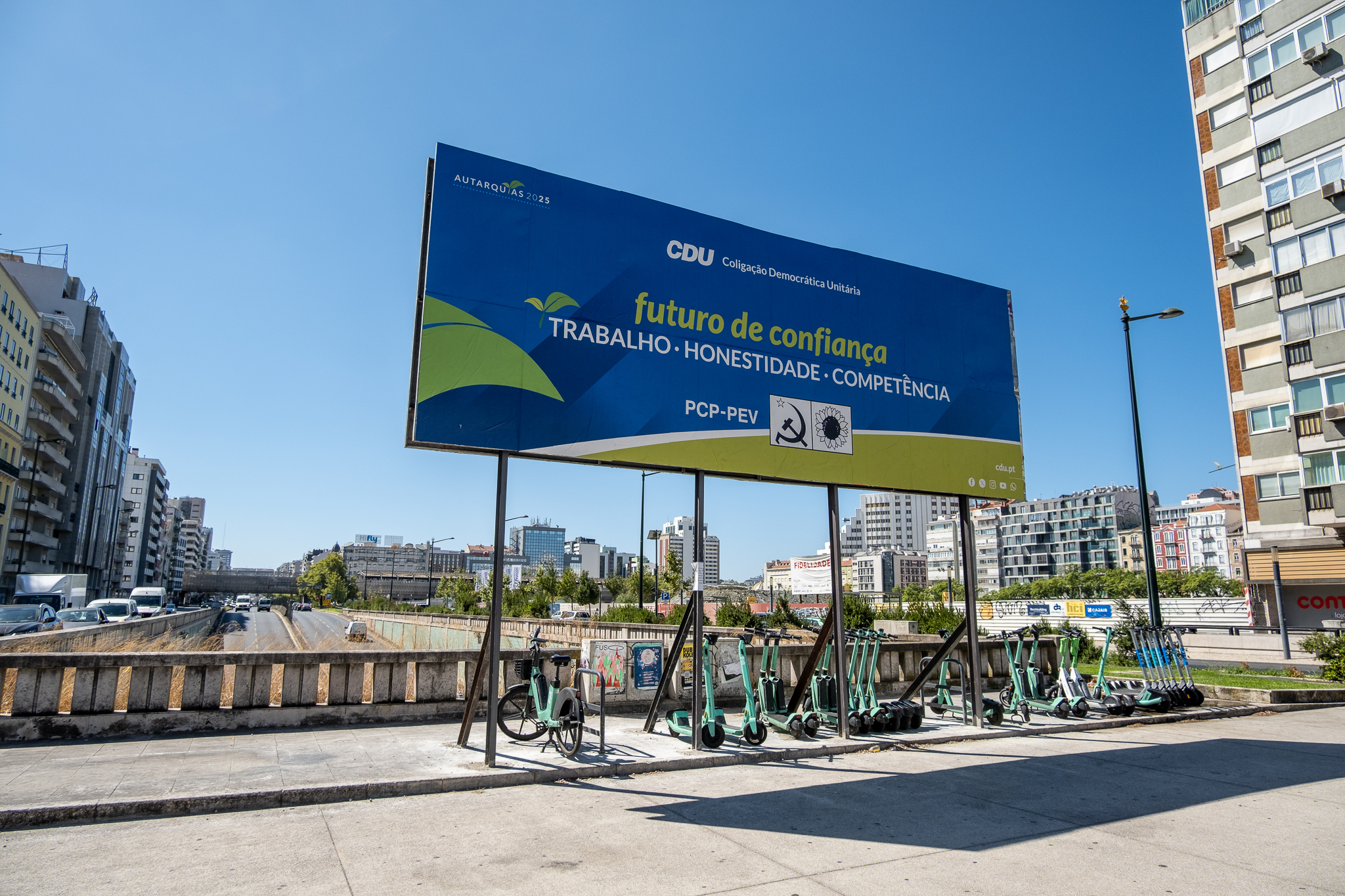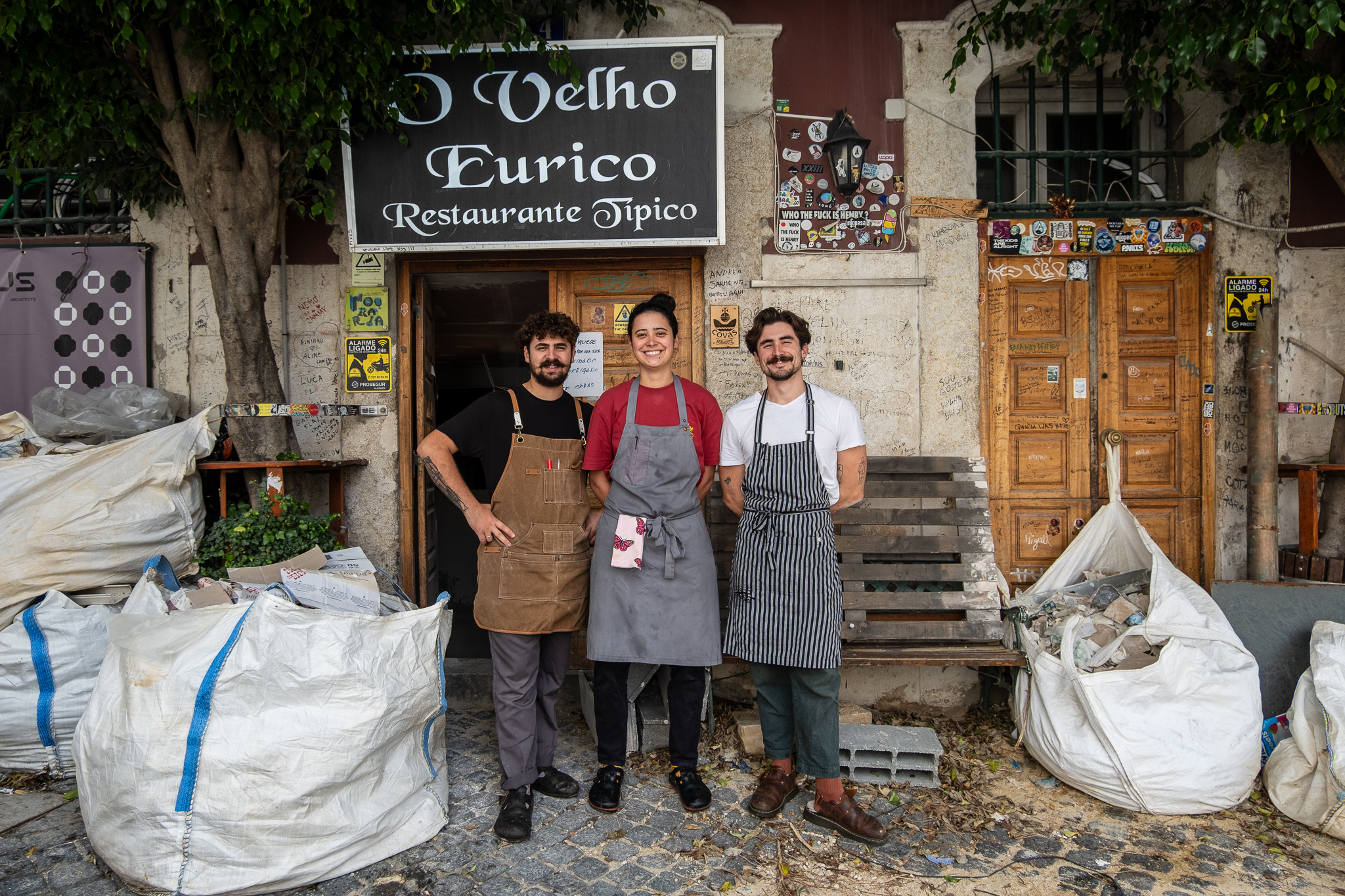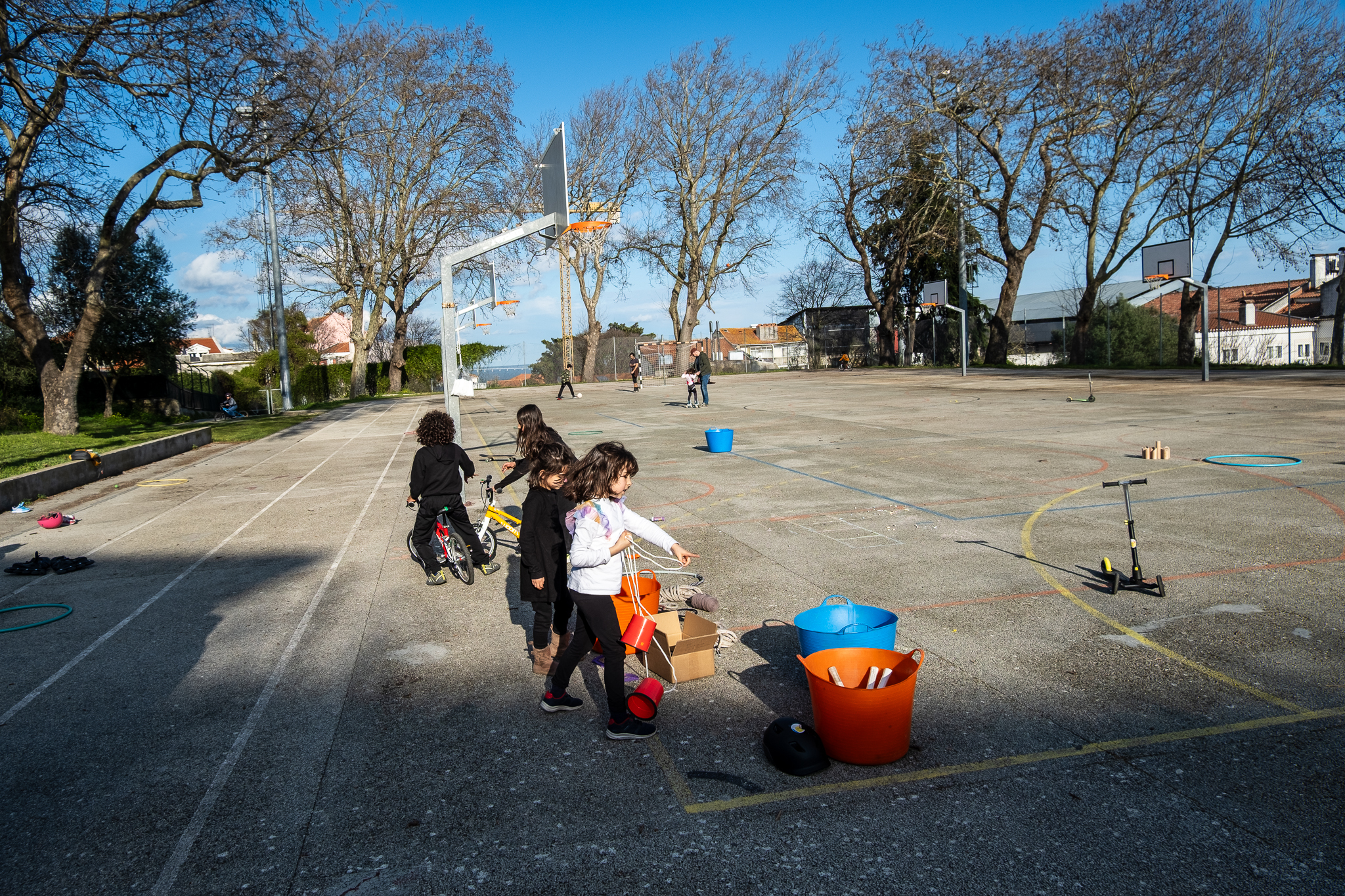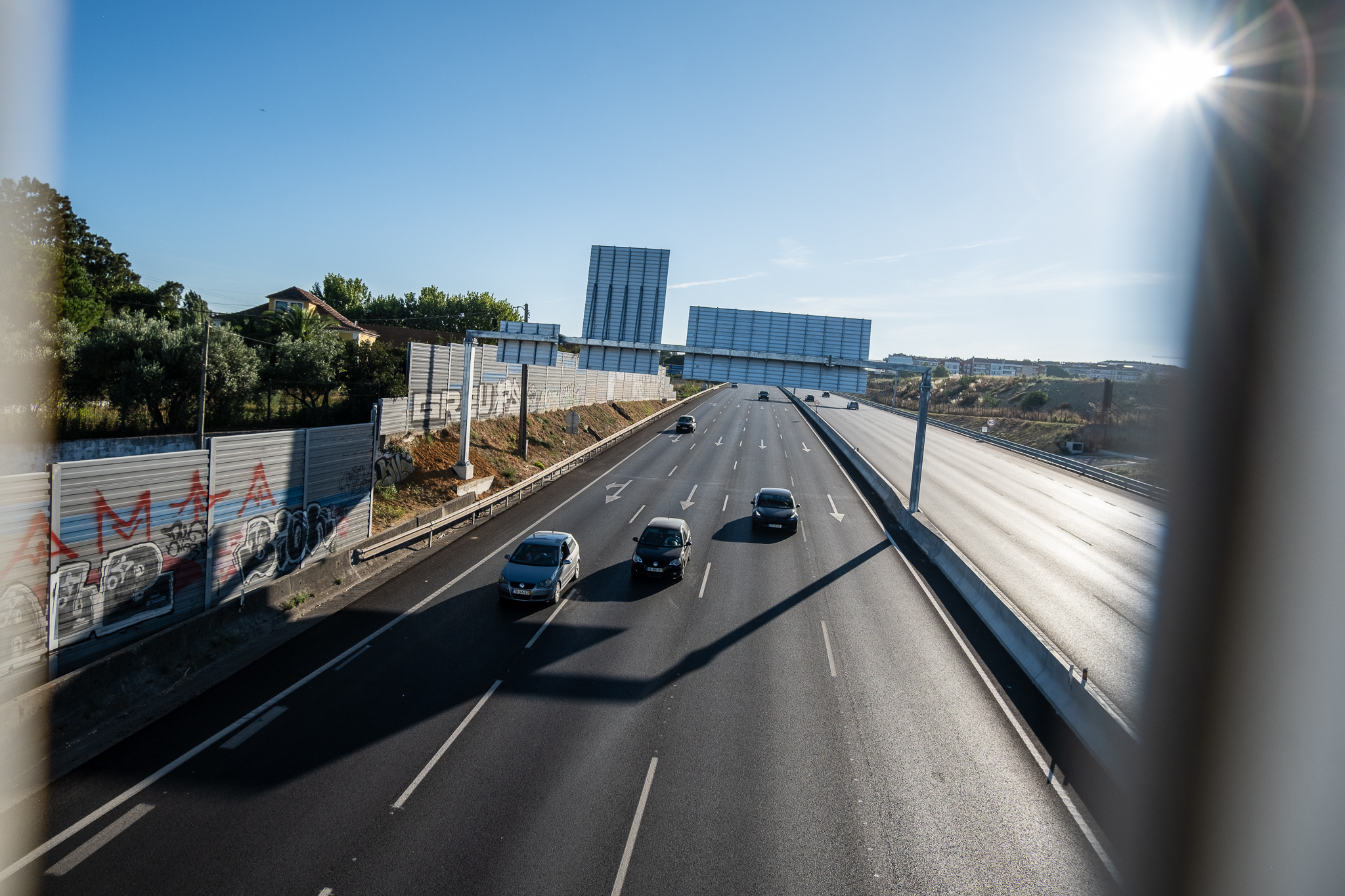O Moita Ciclável nasceu como uma página de Facebook mas pode fazer o seu caminho rumo a um movimento associativo. A ideia é formar uma massa crítica e propor soluções que ajudem a equilibrar o espaço público.
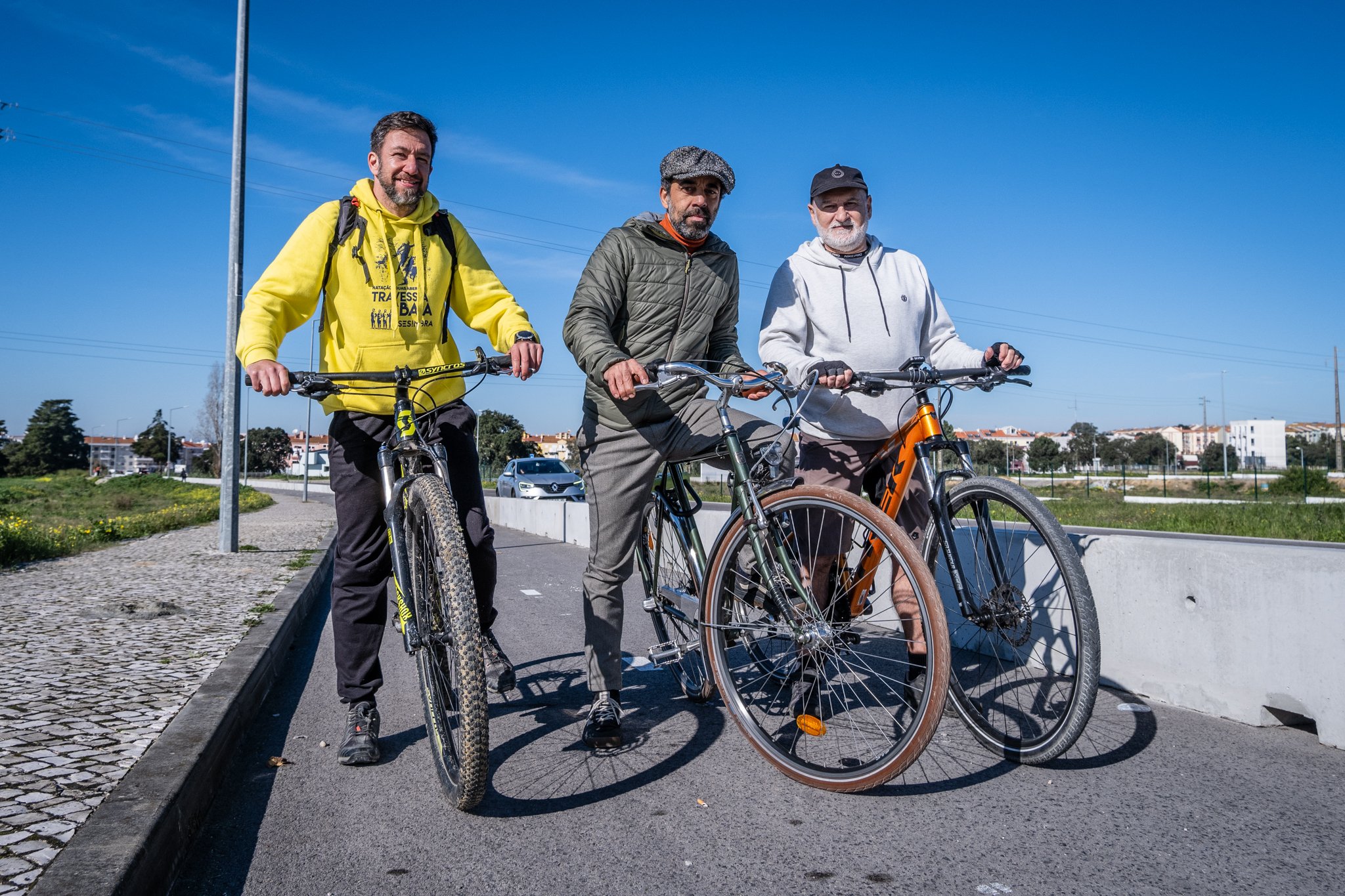
Quando falamos da construção de ciclovias, é habitual focarmos as atenções em Lisboa. Mas isso não significa que noutros locais da área metropolitana não haja quem também tente tornar a sua cidade mais ciclável, procurando mobilizar os seus concidadãos para tentar resgatar o espaço público e simultaneamente fazendo pressão pública por mudanças estruturais.
Sérgio Franco dá corpo a esta ideia. É na Moita que trabalha e faz a sua vida, e é de bicicleta que se desloca. Escolhe a bicicleta aproveitando o facto de a vila ser praticamente plana, as distâncias curtas e por gostar de pedalar. Há vários anos que mantém o Moita Ciclável, uma página no Facebook onde vai partilhando e discutindo a mobilidade na vila da Moita e por todo o concelho, discutindo com quem lhe aparecer na caixa de comentários. A página é também uma plataforma de divulgação de alterações que a autarquia possa fazer em prol da bicicleta e que, nos últimos meses, têm sido algumas.
Uma das que mais entusiasmou Sérgio foi um troço de ciclovia na Estrada dos Espanhóis, entre duas rotundas, ligando o centro da vila a uma zona de supermercados. Nessa estrada a velocidade permitida é de 70 km/h porque se trata de uma estrada nacional, pelo que a ciclovia foi segregada com separadores de betão do tipo New Jersey – uma novidade na Moita. Sérgio não escondeu o entusiasmo na sua página de Facebook em relação a esta transformação, tendo partilhado as diversas fases da obra que ficou pronta no início deste ano. “A estrada tinha duas vias com uma berma. Essa berma foi transformada numa ciclovia bidireccional”, explica. “A barreira em betão dá outro sinal aos automobilistas e também acalma o tráfego, as velocidades.”



O troço tem menos de 500 metros de extensão mas três de largura (o que é muito simpático), mas é um importante acrescento para a mobilidade ciclável da vila. “Dá acesso a dois supermercados e também a uma outra zona habitacional, ligando-a ao centro da vila da Moita”, contextualiza. “É preciso olhar para a bicicleta como um meio de transporte, não só como lazer.” A ciclovia foi barata – um investimento municipal de 38,95 mil euros – e pode dar pistas sobre como a Câmara da Moita vê a construção de rede ciclável daqui para a frente: mais virada para o ciclista utilitário, menos para o lazer.
Uma oportunidade ainda por explorar

Numa manhã de sábado, solarenga e fria de Inverno, Sérgio juntou mais dois amigos e mostrou ao LPP como é andar de bicicleta na Moita, que infraestrutura existe e o que falta fazer. O percurso culminou na já referida ciclovia nova da Estrada dos Espanhóis, mas passou pelos troços mais antigos da vila. Depois da pedalada, fica a sensação de haver muitas oportunidades ainda por explorar, numa vila que é relativamente plana e pequena – sendo as distâncias, por isso, curtas –, e onde o stress rodoviário é bem menor em comparação com Lisboa, por exemplo.
Sérgio e os amigos não têm dúvidas de que a bicicleta poderia ter uma maior utilização na Moita. “A ideia pela qual nos batalhamos é a criação de ciclovias dedicadas para bicicletas e também para pessoas com dificuldades motoras (quando pensamos em ciclovias, não pensamos só nas bicicletas: há pessoas em cadeiras de rodas que as utilizam), possivelmente também reservando espaço para peões”, aponta Sérgio.

Como muitas outras autarquias, a Câmara da Moita tem um plano de ciclovias pronto há largos anos, onde estão definidos eixos prioritários de intervenção e pistas de diferentes tipologias: algumas segregadas como a da Estrada dos Espanhóis, outras em partilha com carros (zonas 30 ou de coexistência) ou peões (pistas partilhadas); umas ao nível da rodovia, outras no passeio. Mas só aos poucos e poucos os projectos vão saindo do papel.
“Eu acho que uma rede ainda vai demorar muito tempo”, diz António João, um dos amigos de Sérgio e que usa a bicicleta mais para lazer. Sérgio é mais optimista: “Vai demorar tempo mas temos de celebrar as pequenas conquistas. Aqui na Estrada dos Espanhóis ganhámos uma ciclovia segregada. Foi uma pequena conquista”, diz. “Mas gostaríamos que existisse realmente uma rede integrada de ciclovias, que ligasse também a outros municípios. Por exemplo, nos ligasse também ao Montijo para irmos ao cinema, porque já não há cinema na Moita. Gostaríamos de ir ao cinema com os nossos filhos, de ir sozinhos, de ir com as nossas esposas, com as nossas namoradas, com os nossos amigos. Gostaríamos de ir às compras, ao centro comercial, como toda a gente vai, mas de forma pacífica, de forma segura e de bicicleta. Porque também deveríamos ter essa escolha.”

O desenho urbano tem impacto na mobilidade que as pessoas escolhem. Se privilegia o automóvel, tornando-o mais seguro, cómodo e rápido, será nesse modo que a maioria das pessoas – que tiverem essa possibilidade económica – se irá deslocar. Esse privilégio exclui outras pessoas. Não só aquelas que não têm capacidade financeira para ter um automóvel, mas também as que não podem conduzir. Como as crianças. “A escola onde a minha filha andou tem tendência a ter muito trânsito à volta porque, com a sensação de insegurança das estradas, os pais levam os miúdos de carro”, conta Nuno Faria, o amigo que ainda faltava apresentar nesta história. “A estrada até tem várias paragens de autocarro, mas não tem passeio sequer. São três paragens numa estrada sem passeio nem berma, com muito movimento e onde andam muitos estudantes. Agora no período de Inverno, à noite, vêm pela estrada sem luz, o que é perigoso.” No final do dia, “isto é uma bola de neve” porque os pais e mães que levam os filhos a essa escola “poderiam ir a pé ou de bicicleta, se houvesse acessos seguros”. As próprias crianças e jovens poderiam ir sozinhos.
“Também tive os meus filhos nessa escola. Durante oito anos, fui todos os dias ir levá-los”, conta Sérgio, que transportava as crianças na sua bicicleta e corrobora a falta de condições. “Aprendi enquanto ciclista a posicionar-me na via de uma forma diferente. Percebi que quanto mais à berma, era pior para mim e para os meus filhos. E passei a posicionar-me mais ao centro da minha via, para ficar mais dentro do túnel de visão dos automobilistas. E parecendo que não, isso traz mais respeito por parte dos automobilistas.”
Nuno fazia igual. “Levava a minha filha. Ela ia na sua bicicleta, eu na minha. Eu ia atrás para protegê-la. Também nos posicionávamos no centro da via. Ela ia um pouco mais encostada que eu, claro. Mas às vezes levava buzinadelas, mesmo com uma criança”, conta. “Como é uma estrada que não tem passeios nem berma, e os carros vão com pressa para deixar os filhos e mais não sei o quê, pronto… Muitas vezes abdicava da bicicleta e levava o carro.”
Trocar o automóvel pelo carro

Para Sérgio, abdicar da bicicleta deixou de ser opção quando trocou o automóvel por uma bicicleta de carga, há uns anos. É nela que faz hoje a sua vida, adaptando-se às circunstâncias. “É uma longtail, ou seja, é uma bicicleta mais comprida onde posso carregar os meus dois filhos, mas também as minhas compras. Faço tudo com a bicicleta. Compras, ir à farmácia, tudo. Com chuva, visto o meu poncho e visto o poncho aos meus filhos. E para as compras é a mesma coisa, tenho uns alforges com umas capinhas impermeáveis, e pronto, faço a minha vida sem stress, não fico preso em trânsito.”
No início, conta, as pessoas ficavam a olhar com alguma estranheza ao verem uma bicicleta de carga, diferente do habitual. Mas se a estranheza se foi diluindo com o tempo, conta que viu surgirem outros adeptos das duas rodas “Há cada vez mais pessoas a andar de bicicleta. E já se começa a ver muitas pessoas também com as crianças, em cadeirinhas. Cada vez mais. Eu fico muito agradado com isso.”

Ainda que ver pessoas a andar de bicicleta na Moita seja cada vez mais comum, o uso de lazer ou desportivo ainda é o predominante. “O que nós queremos potenciar também é o uso da bicicleta como veículo de transporte diário para fazer o dia-a-dia normal, algo que podemos conseguir muito bem aqui na nossa vila e no nosso concelho, porque é praticamente tudo plano”, diz Sérgio. “Andar de bicicleta no centro da Moita é pacífico. Nas horas de ponta, nota-se um bocadinho mais algum stress rodoviário.” António concorda e diz que, como as distâncias dentro da vila são curtas, a bicicleta é uma melhor opção. O facto de usar carro e bicicleta permite a António ter uma melhor perspectiva dos dois lados. “Quem usa a bicicleta, torna-se melhor condutor de automóvel”, refere. “Num modo ou no outro, tenho de ter consciência do que está à minha volta, de quem vem, de quem vai, dos peões, dos carros, das bicicletas; e tenho que cumprir as regras e zelar pela minha segurança. Se toda a gente fizer isso, então as coisas correm bem.”
António, Sérgio e Nuno têm prática de utilizar a bicicleta e isso dá-lhes mais confiança a pedalar na Moita. Mas têm consciência da existência de grupos mais vulneráveis e da necessidade de mobilização em torno de infraestruturas que criem espaços para todos. “Nós quando estamos aqui a falar temo-nos de lembrar que, se calhar, somos pessoas que arriscamos mais. Mas quando se pensa em pistas cicláveis, temos de pensar nas mulheres, nos idosos e nas crianças. Esses utilizadores precisam de mais segurança, precisam de algo que lhes transmita segurança.” Nos últimos meses, a Câmara da Moita colocou delimitadores em algumas ciclovias do concelho, delimitando melhor o espaço da bicicleta. Foi o caso da ecovia que oferece uma agradável vista sob a frente ribeirinha entre a vila da Moita e a aldeia de Gaio-Rosário. Trata-se de um troço ciclopedonal que existe ao lado de uma estrada onde se pode circular a um máximo de 70 km/h e que passou a ter pilaretes de madeira. Quando essa ecovia termina, no lado de Gaio-Rosário, começa uma ciclovia pintada ao lado de uns arruamentos locais e que dá acesso a uma zona balnear. Aqui foram colocados balizadores de borracha.


“Numa via de circulação de 30 km/h, pinos de plástico são suficientes. Porque é uma zona 30, apesar de haver automobilistas que não respeitam o limite. Mas é suficiente”, diz Sérgio. “Mas, por exemplo, nesta Estrada dos Espanhóis, que nota-se que de facto há grandes velocidades. Aqui os pinos não bastam”, completa. Para Sérgio e o restante grupo, a maior dificuldade de utilização da bicicleta ainda por endereçar está entre localidades. “Já me aconteceu ir daqui para o Montijo e um autocarro de passageiros passar-me talvez a palmo do guiador”, relata António.
Segregar fora da vila da Moita
A ciclovia da Nacional 11 não chega a Alhos Vedros, ficando-se pela Quinta Fonte da Prata. “O grande ponto crítico é a Moita, Alhos Vedros, Baixa da Banheira. É um sítio onde não há nenhuma ciclovia, é um sítio com tráfico elevado, elevadíssimo. E é aí onde eu sinto mais dificuldades em circular de bicicleta, onde nos apitam, onde nos mandam para o passeio”, explica Sérgio. “E como dizia o António, a saída para o Montijo é outro problema que nós temos. Dentro da vila da Moita, nós conseguimos circular relativamente em paz. Se queremos sair para outra freguesia, localidade, para outro concelho, torna-se muito perigoso.”

É para dar corpo a estas reivindicações e desejos que o Moita Ciclável pretende ser mais que uma página de Facebook. O plano é eventualmente constituir uma associação para começar a agregar pessoas e começar a formar uma massa crítica no concelho em torno da bicicleta. O objectivo é não só constituir uma voz política que possa dialogar com os decisores e representar vontades comuns, mas também ter um papel educativo e de sensibilização junto da comunidade. A começar pelas escolas. “Gostávamos de trabalhar com as escolas e criar uma escolinha de bicicleta para ensinar as crianças a olharem para a bicicleta não só como lazer, como um brinquedo, mas como um meio de transporte que lhes dá independência”, explica. “Mostrar que não precisam de esperar pelos 18 anos para tirar a carta e que podem adquirir independência para circular no concelho”, diz Sérgio, recordando outros tempos onde andar de bicicleta era a norma, antes da pressão rodoviária. “Nós fazíamos isso quando éramos crianças. Íamos para todo lado de bicicleta, numa altura em que não havia os constrangimentos que existem hoje. Hoje há mais carros e menos paciência na estrada. Mas é possível ensinar a conviver com isso.”
Mas se a intervenção política é um dos objectivos, o caminho para lá chegar também passa por outras vias. O grupo de amigos reconhece a importância destas colectividades pelo simples facto de servirem para agregar pessoas e promover encontros. “Já há algum tempo que o pessoal aqui da Moita fala de criar uma pequena organização para organizar passeios familiares, mas que têm que ser mais que qualquer coisa do que apenas andar de bicicleta ao fim-de-semana, tem que ser mais qualquer coisa. Podem ter piqueniques, um almoço, podem ser passeios temáticos… isso de maneira que as pessoas aderiram”, acrescenta António. Desses encontros e convívios, podem resultar ideias, seja para propor ao Município, seja para fazer. Pode haver massa crítica. “A ideia é tentar juntar tudo e criarmos aqui a força para podermos ter aqui massa crítica, para poder propor e ajudar a equilibrar o espaço público”, completa Nuno.





